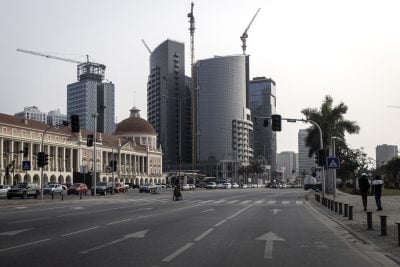Many cocoa producing countries still rely on exporting raw beans, but local processing and encouraging local consumption offer the chance to build up revenues and create employment.
When French chocolate manufacturer Cémoi opened its new Abidjan facility in May 2015, a flush of excitement followed the inauguration of Côte d’Ivoire’s first chocolate factory.
A year later, sales from the factory beat forecasts and the company was poised to double production in the country to 10,000 tonnes over the next three years, the company’s CEO Patrick Poirrier told Bloomberg.
Ivorian authorities set an ambitious target of processing 50% of its cocoa locally.
With cocoa accounting for 15% of its GDP and 40% of its exports, the goal was to add more value to its raw materials and, in the process, create more jobs.
As part of concerted efforts to build value, the government introduced tax breaks for grinders and producers in order to achieve its goal.
Ivorian chocolate entrepreneurs like Instant Chocolat opened stores and are hoping to tap into emerging local middle-class consumers.
Côte d’Ivoire, Ghana, Nigeria, Cameroon and Togo are the main cocoa-producing countries in West Africa.
Together, these West African nations account for 70% of the world’s cocoa, with Côte d’Ivoire and Ghana alone producing about 60%.
Yet many countries across the continent are still overly reliant on the raw export of cocoa at the expense of the value creation seen in Côte d’Ivoire.
Most of the output in the region is exported unprocessed, mainly to the European Union and North America, destroying local value.
But at the heart of most of the schemes launched by state authorities in the region is the desire to increase production rather than encourage local consumption.
Côte d’Ivoire’s nine-year-long Programme Quantité-Qualité-Croissance is hoping to improve cocoa production so that by 2023, 800,000 hectares of cocoa, including 150,000 hectares damaged by disease, are replanted.
In 2012, the government introduced a fertiliser initiative for cocoa farmers and hopes to reach 200,000 farmers by 2020.
The Ghana Cocoa Board (Cocobod) implemented rehabilitation and replanting as well as programmes to fix roads in cocoa-growing communities, tackle pests and diseases, improve marketing facilities, and to provide quality inputs like seeds, fertilisers and chemicals.
In 2011, Nigeria introduced its four-year Cocoa Transformation Action Plan (CTAP) to increase cocoa production by 40% to reach 500,000 tonnes by 2015 and process at least 25% of national output.
Supply glut hits prices
Although these schemes improved the quality of production and yields, a sharp supply glut and subsequent fall in global prices from 2017 shows the danger of boosting production without pursuing value addition.
Between September 2016 and February 2017, the Cocoa Barometer for 2018 reported that the global market price declined steeply, with a tonne of cocoa reducing dramatically from above $3,000 to less than $1,900.
Smallholder cocoa farmers were the worst hit. As the Conseil du Café-Cacao (Coffee-Cocoa Council or CCC) slashed farm gate prices by 36% in April 2017, an estimated 6m smallholders who relied on cocoa as their major source of income grappled with the downturn.
As a result of the glut, CCC announced a year ago that it would stop growing schemes which provide improved seed varieties and plants for the 2018-19 season.
In Ghana where the sector employs some 800,000 farmers and generates about $2bn in foreign exchange annually, production for the 2017-18 season was about 900,000 tonnes.
The world’s second largest exporter lost close to $1bn in export earnings due to the market glut, as did Côte d’Ivoire.
Last September, Cocobod entered a $1.3bn loan with international banks to pay buyers for bean purchases.
Cocobod was also on the verge of receiving a $600m loan from the African Development Bank (AfDB) as of November last year to build warehouses to stockpile cocoa beans and help it ward off global price volatility.
As a result of the glut, policymakers have called for a renewed focus on value creation and warehousing.
“If you have to constantly sell your beans, you don’t control anything. You just dispose of them.
“You’re essentially a market price taker,” African Development Bank president Akinwumi Adesina told journalists at an investment forum in Johannesburg last November.
“So that needs to change in terms of the volumes you are actually putting into the market.”
Industry experts say West Africa’s main cocoa producers should invest in cocoa processing facilities to cut down on the cost of local processing and increase domestic consumption.
As countries process cocoa at home, there are employment opportunities in the manufacturing of chocolate, cocoa liquor, butter and cake.
Strategic partnership
Last year, Ghana and Côte d’Ivoire decided to work together through a strategic partnership that will see both countries harmonise their marketing policies and create a joint committee to promote cocoa consumption locally and within West Africa.
The governments are working to improve oversight, enhance production in line with demand, collect data on production and exports and get cooperatives to function effectively so farmers can be guaranteed a minimum price for their cocoa.
Governments have to help investors overcome the barriers that discourage investment, particularly in the areas of transport, electricity, labour and shipping.
By 2024, the global chocolate market is expected to rise to $161.6bn, up from $103.2bn in 2017.
Growing more cocoa is no longer enough.
Expanding production of cocoa-derived products and finding new export markets will be key to the revival of the sector in West Africa.
Linus Unah
Want to continue reading? Subscribe today.
You've read all your free articles for this month! Subscribe now to enjoy full access to our content.
Digital Monthly
£8.00 / month
Receive full unlimited access to our articles, opinions, podcasts and more.
Digital Yearly
£70.00 / year
Our best value offer - save £26 and gain access to all of our digital content for an entire year!
 Sign in with Google
Sign in with Google 


